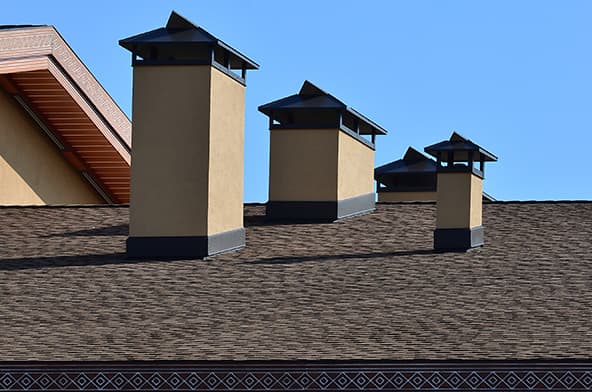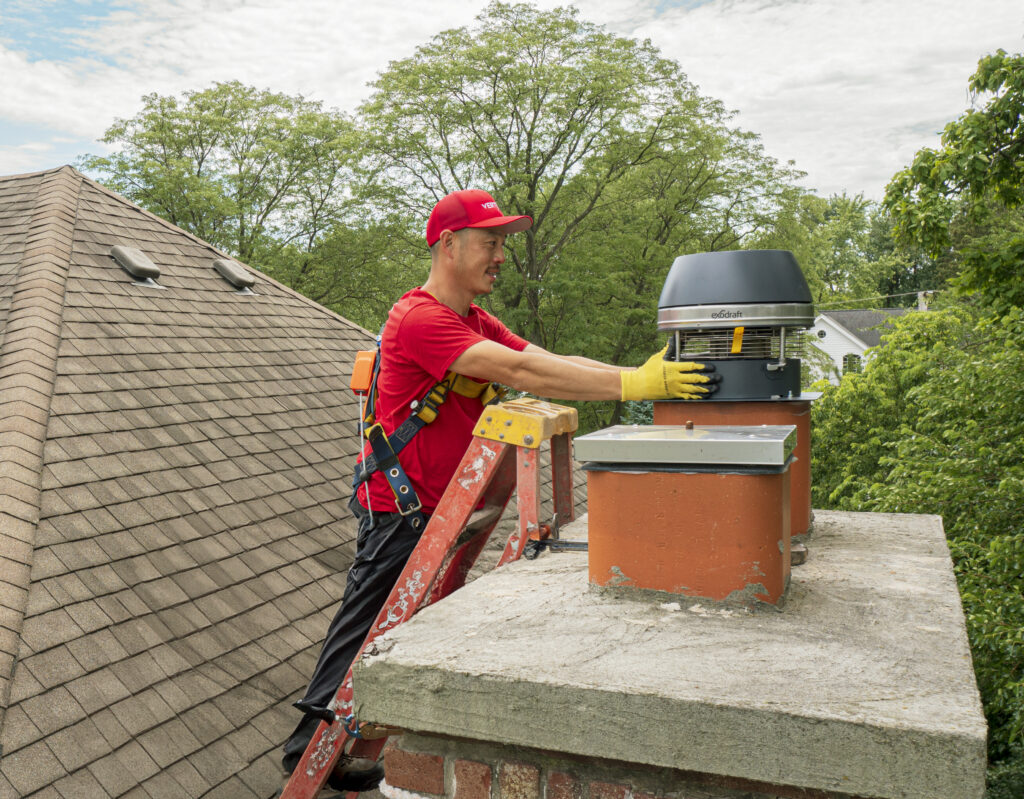
Chimneys are instantly recognizable - even from a young age, many children incorporate these structures into their drawings even if they don't have a chimney on their own home. While they can be remarkably beautiful, chimney's do require a great deal of upkeep.
While maintenance can vary depending on what the chimney is made up of, typically it is composed of cleaning, looking over, and repairing any cracks or water damage present. The best way to fix a chimney is to prevent it from happening in the first place and the best way to do that is to seal it.
Sealants are a type of substance used to block fluids from penetrating the material it is on. In terms of chimneys, these sealants are typically organized into one of two camps - that of polyurethane or silicone. Not all sealants are made the same and in order to determine which is the best for your chimney, we first need to go over the two substances in detail.
The 101 on Silicone
On the most, basic level silicone is composed of both silicon, oxygen, carbon, and hydrogen atoms. Sometimes infused with other things as well, this simple substance creates a polymer that is used in a wide variety of fields such as adhesives, lubricants, and insulation.
The reason for this is that this polymer has many useful characteristics. Silicone is remarkably low in thermal conductivity, toxicity, and thermal conductivity. It has the capabilities of sticking to certain materials but not others, while also having remarkable ozone and ultraviolet (UV) light resistance.
Microbiological growth like mold, fungus, and bacterias are repelled by it. Needless to say, this substance is able to create watertight seals that are able to withstand a high-temperature fluctuation - with many experiments putting it at a range of a -100° to 250° Celsius.
In fact, silicone is so successful in repelling high temperatures that it's often used as a way to prevent the spread of fire throughout a home. When properly used, a silicone-foam can be used to bring new buildings up to fire code compliance.
All in all, silicone is known for its remarkable toughness and flexibility that is rooted in its chemical composition. Because it is an inorganic substance, it has remarkable longevity in face of even the most brutal environments.
The Polyurethane Breakdown
Whereas silicone is primarily composed of inorganic substances, polyurethane is primarily composed of organic compounds held together by inorganic, urethane, compound. Polyurethane can be composed of a wide variety of different chemicals that can all be organized in a certain way based on the polyols and isocyanates used to make it.
For instance, if the polyol is organized in longer segments that polyurethane will be an elastic polymer, while a heavy amount of crosslinking will create a more rigid substance. Because of this versatility polyurethane is used in a wide range of different items such as gaskets, wheels, adhesives, and sealants to name a few.
Recently, polyurethane compounds have been engineered to be more green. This type of polymer is derived more from vegetable oils so as to be more organic. Polyurethane is often used as a chimney sealant as it has remarkable toughness and flexibility. This type of polymer has a remarkably low cost because of its plentiful source of basic chemicals that make it up along with relatively low manufacturing cost.
Which is Better?
The advantages and disadvantages of both substances fall back to its basic chemical components. The organic nature of polyurethane means that it's susceptible to break down over time in the form of UV radiation.
Silicone, on the other hand, doesn't have to worry about this because it's mostly inorganic - meaning that unlike polyurethane there is no pull to go back to its natural state. This results in polyurethane having a lifespan upwards to 10 years, while silicone can easily double this or more.
The reason for this huge discrepancy isn't just a result of the damaging effects of the sun either - silicone is much more suited for temperature extremes. This is important not only on the interior of the chimney but also on the outside - especially if you live in an area of large seasonal changes.
This difference in lifespan is often reflected in the warranty offered by the manufacturer - polyurethane companies typically only require a 5-year warranty while silicone is closer to a 20-year warranty.
All the advantages don’t go to silicone though - polyurethane is remarkably easier to manufacturer resulting in a cost that is about half that of silicone. This can be remarkably important for those on a bit of a budget crunch or just need to make a quick fix without harming the bank too much.
That being said, while labor comes out to about the same, polyurethane will need to be replaced more often than silicone - this means that while in the short term polyurethane is cheaper, silicone wins out in the end.
Sealing a Chimney and Switching from Polyurethane to Silicone
When sealing a chimney, the best tool to use is a sprayer. On vertical sections, which should be the majority of your chimney, this waterproofing should be applied from bottom to top - the reason for this is that sealers have a tendency to run.
This ‘running' can be taken advantage of by reinforcing the bottom section of the chimney with additional sealer. Of course, the top section of the chimney should be focused on a bit more by giving additional passes to it.
The general rule of thumb is that whatever area you do make sure to hit it again in ten minutes to ensure that it gets a great soaking. Certain spots like mortar joints, flashing, and the crown should all have a particular focus on them.
The hardiness of silicone means that many people want to use it as a sealer but already have polyurethane on the original structure. Thankful switching over from polyurethane to silicone is possible, as long as special considerations are kept in mind first.
The original layer of polyurethane needs to be removed first - the reason for this is that the mixture of the two substances can actually undermine the silicone causes it to break down much faster.
This is a result in the polyurethane, despite being trapped underneath the silicone, still breaking down - this breakdown can cause both the lower layer of the polyurethane and the upper layer of the silicone to fall off the chimney, removing its sealing properties.

Final Thoughts
While polyurethane does have its strengths related to its fairly low price, silicone is by far the superior choice when choosing a chimney sealer. Silicone is an inorganic substance that has high toughness against temperature fluctuations and UV rays.
Polyurethane has a tendency to break down and has lifespan at best half that of silicone. Regardless of what you choose for a sealer, how you apply them is roughly the same - with a sprayer being the fastest way to do it. If you do decide to replace your polyurethane with silicone make sure you follow the proper steps.
For all your chimney needs, contact us today and see why so many homeowners choose us.
